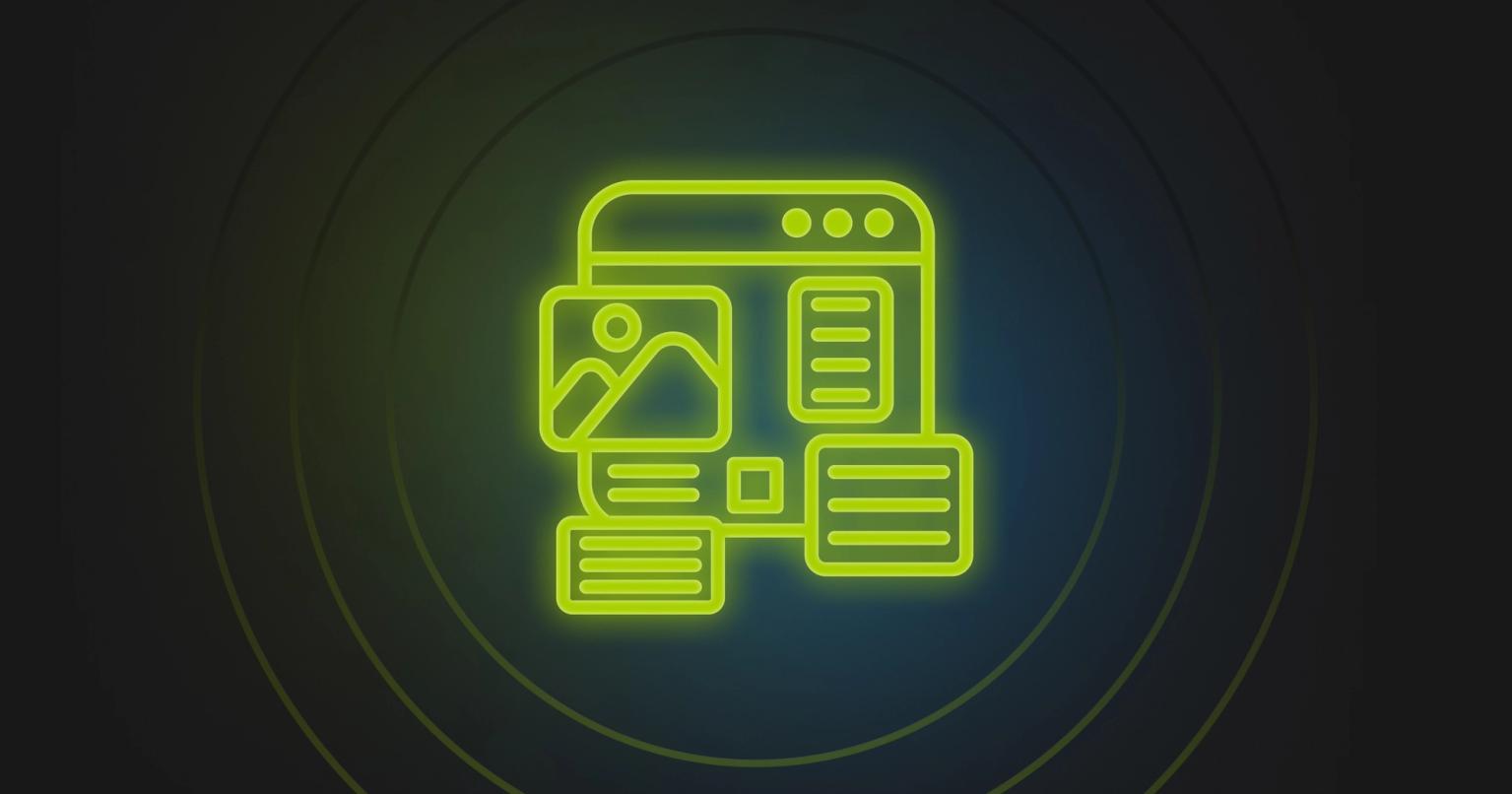The Decentralization Advantage: How Modern Enterprise Marketing Teams Scale

Summary
Discover how centralized tech enables decentralized execution. Learn how marketing ops can empower global teams at scale.
If you're a student of digital marketing history, one theme that you can identify is the steady democratization of marketing tools. In our storied past, we've seen complex and technical marketing tasks go from the domain of IT and a small team of experts and specialists to be the responsibility of everyone in the marketing organization.
Take Knak for example. Creating enterprise-grade marketing email templates for your team used to be the domain of designers and developers, often sourced from outside marketing to help with the build process. It was a clunky process that required lots of reviews, approvals, and back-and-forth.
The ideal state, we can all agree, is to provide marketers with the ability to design templates and use them to quickly execute on campaigns. To achieve this, tools like Knak provide no-code editing and instant syncs to MAPs to enable marketers to do what they do best: be creative. Templates in Marketo, for example, use pre-approved designs allowing a distributed team to create emails for programs without having to get HQ's approval for something as simple as an event email.
Decentralization is accelerated by the rise of intuitive tools that streamline the marketing workflow. When everyone is a marketer, then all tools must enable marketers. This is the central challenge facing enterprise marketers looking to move to a decentralized marketing model.
In our work with the top enterprises on the planet, we've observed a new paradigm emerge: a hub-and-spoke model with tech at the center enabling distributed teams. To decentralize, we may need to centralize our tech stack.
Why centralized vs. decentralized is the wrong question
First, let's dispel a misconception: your choice isn't binary between centralization or decentralization.
For enterprise teams with a centralized marketing operations function, the opportunity is to use technology to enable everyone on your team. An interesting observation from our own customers is that SMB teams optimize centers of excellence, while enterprises face continued demand for decentralization.
This makes perfect sense. Enterprises operating on a global scale have distributed teams in many locations. Field marketers responsible for a region may be supported by a small, capable team, but not the full support or attention of the centralized ops function. For enterprises, picking the right model is essential.
Pure centralization may not be the answer. It could invite bottlenecks, slow your time-to-market and result in misalignments with your local markets. Requiring everyone to funnel requests and approvals through a central command post can be a challenging proposition.
By the same token, unchecked decentralization can result in brand chaos, duplicated efforts, and resource waste. Local teams, unchecked by any semblance of process, gradually veer further from brand guidelines, going rogue, and, potentially, creating unwanted headaches.
The solution is somewhere in the middle. Enterprise that adopts a centralized technology solution that provides quality control, pre-approved assets and workflows, and a collaboration layer.
The hub-and-spoke model
Centralize systems, decentralized execution.
The hub-and-spoke model provides the best of both worlds:
- Center of excellence accessible to everyone in the org
- Clear brand controls and approval workflows
- Collaboration without delay
- Empower distributed teams to execute quickly
- Creative freedom within the bounds of brand guardrails
The role of marketing operations in this model is strategic enabler. They orchestrate the systems that everyone uses – ensuring consistent data collection, workflow execution, and requisite templates – while enabling distributed teams to execute marketing campaigns without being bogged down by process.
Decentralization with marketing operations as the focus
Technology is the great enabler in modern marketing. The continuous and rapid development of martech has propelled marketing operations teams to the forefront. Undoubtedly one of the most important teams, they ensure that the lights stay on and all processes run smoothly. They are the engineers behind the marketing machinery.
As such, marketing operations plays an important role in decentralization. Technology infrastructure is the key to linking all the distributed marketing nodes around the world. Regardless of where your work, technology connects you back to headquarters. MOps teams must consider dozens of variables when deploying new technology:
- Does it integrate with our tech stack?
- If it doesn't integrate with all our tools, which tools do we need to evaluate?
- How do the workflows of a new system improve or fit into existing processes?
- How do we govern the application while still enabling autonomy.
Custom solutions and vendor-lock are persistent challenges in enterprise marketing. Oftentimes, enterprises require unique solutions and features, potentially even integrating custom solutions from vendors or homegrown solutions. Replacing these is a hurdle of technology and habit.
In the hub-and-spoke model, we also have the opportunity to utilize composability – point-solutions that do a few things extremely well versus monolithic, all-encompassing solutions. The end of the journey is a well-oiled decentralized team, but the side-quests along the way can create roadblocks and difficult challenges.
What are the essential components of a centralized marketing platform?
Let's consider how we approach evaluating software for our hub-and-spoke strategy. True decentralization is tech-enabled, but that puts a lot of onus on MOps to make informed choices.
Here's how you might review deploying a no-code email template system in place to enable a distributed team with email campaigns.
Component Category | Core Functionality | Hub Benefit | Spoke Enablement |
|---|---|---|---|
Template & Asset Libraries | Pre-approved, modular design components that ensure brand consistency at scale | Centralized brand control and version management | Creative freedom within established guardrails |
Integration Ecosystem | Native connections to marketing automation platforms (Marketo, Salesforce, Eloqua) | Unified data flow and workflow orchestration | Seamless execution without platform switching |
Collaboration & Approval Workflows | Real-time commenting, review cycles, and automated routing | Process governance and compliance oversight | Faster approvals without email ping-pong |
Governance & Permissions | Role-based access controls and brand guardrail enforcement | Maintain brand integrity and compliance | Autonomous creation within defined boundaries |
Dynamic Content Engine | No-code personalization and AMP/velocity scripting abstraction | Strategic personalization standards | Tactical execution without technical barriers |
Multi-Language Support | AI-powered translation and localization workflows | Global brand consistency across markets | Local market relevance and cultural adaptation |
Cross-Platform Optimization | Automatic rendering across email clients and devices | Deliverability and performance standards | Worry-free deployment across channels |
Project Management Integration | Direct sync with Asana, Monday.com, and team communication tools | Resource allocation and capacity planning | Streamlined workflows without context switching |
AI-Powered Assistance | Subject line generation, alt text creation, and content optimization | Brand voice consistency at scale | Enhanced creativity and accessibility compliance |
Analytics & Performance Tracking | Campaign performance data and optimization insights | Strategic decision-making and ROI measurement | Data-driven local optimization |
Component Category | Template & Asset Libraries |
|---|---|
Core Functionality | Pre-approved, modular design components that ensure brand consistency at scale |
Hub Benefit | Centralized brand control and version management |
Spoke Enablement | Creative freedom within established guardrails |
Component Category | Integration Ecosystem |
|---|---|
Core Functionality | Native connections to marketing automation platforms (Marketo, Salesforce, Eloqua) |
Hub Benefit | Unified data flow and workflow orchestration |
Spoke Enablement | Seamless execution without platform switching |
Component Category | Collaboration & Approval Workflows |
|---|---|
Core Functionality | Real-time commenting, review cycles, and automated routing |
Hub Benefit | Process governance and compliance oversight |
Spoke Enablement | Faster approvals without email ping-pong |
Component Category | Governance & Permissions |
|---|---|
Core Functionality | Role-based access controls and brand guardrail enforcement |
Hub Benefit | Maintain brand integrity and compliance |
Spoke Enablement | Autonomous creation within defined boundaries |
Component Category | Dynamic Content Engine |
|---|---|
Core Functionality | No-code personalization and AMP/velocity scripting abstraction |
Hub Benefit | Strategic personalization standards |
Spoke Enablement | Tactical execution without technical barriers |
Component Category | Multi-Language Support |
|---|---|
Core Functionality | AI-powered translation and localization workflows |
Hub Benefit | Global brand consistency across markets |
Spoke Enablement | Local market relevance and cultural adaptation |
Component Category | Cross-Platform Optimization |
|---|---|
Core Functionality | Automatic rendering across email clients and devices |
Hub Benefit | Deliverability and performance standards |
Spoke Enablement | Worry-free deployment across channels |
Component Category | Project Management Integration |
|---|---|
Core Functionality | Direct sync with Asana, Monday.com, and team communication tools |
Hub Benefit | Resource allocation and capacity planning |
Spoke Enablement | Streamlined workflows without context switching |
Component Category | AI-Powered Assistance |
|---|---|
Core Functionality | Subject line generation, alt text creation, and content optimization |
Hub Benefit | Brand voice consistency at scale |
Spoke Enablement | Enhanced creativity and accessibility compliance |
Component Category | Analytics & Performance Tracking |
|---|---|
Core Functionality | Campaign performance data and optimization insights |
Hub Benefit | Strategic decision-making and ROI measurement |
Spoke Enablement | Data-driven local optimization |
Self-service as the default
Centralized technology must be self-service. In my opinion, it's non-negotiable in modern digital marketing. Self-service means having the ability to do your job within the application without getting help from internal or external resources.
No-code tools are fast becoming the default because they unlock organization wide adoption. In fact, 81% of companies surveyed by KPMG say no-code tools are of strategic importance in their organization. Where self-service tools (like no-code suites) takeoff is when they are married to organizational processes – eliminating redundancies in your workflows and speeding up time-to-market.
Take sending an email campaign. In the enterprise world, the lifecycle of that campaign can span weeks (or more) from the time you submit the initial request to getting that email developed. By leveraging a centralized tech solution, you can enable team members throughout your organization with smart automation, notifications, and tools to get the job done quicker.
To get to this state, you need to map out your current processes, identify bottlenecks, and discover opportunities to boost efficiency. What if all requests were submitted via a project management tool that integrates with your email builder? As the template is developed, stakeholders are notified when they are needed to review materials. Once approved, the template is synced directly to your MAP ready for your next campaign.
Traditional ways of doing things – cobbling together requests through a hodgepodge of Google sheets and email attachments – give way to smoother processes. Self-service isn't just ease of use, it's also about governance and process improvement. In a martech world that is seeing increased adoption of composable tools, setting a hub-and-spoke model also needs to consider how it interacts and integrates with other tools.
Marketing ops has a major role in orchestrating all this. The role of martech in decentralization is the enshrine process in the technology, to ensure that workflows are clearly understood, and that the system is accessible and available to the right people. MOps' mandate is to map this out and conduct all the players in the orchestra.
The competitive advantage of getting it right
The hub-and-spoke model isn't just theory. Enterprises are already using this model to enable their distributed teams to do more with… more. The best way to scale creativity, the fuel of successful marketing campaigns, is to centralize the tools that make creativity possible.
In the old model, launching a locally relevant campaign meant weeks of back-and-forth with headquarters. In the new model, they grab pre-approved assets, customize them for local needs, and launch the same day. The brand stays consistent, but the execution becomes lightning-fast.
This shift requires marketing operations teams to think differently. Instead of being the gatekeepers who slow things down, they become the engineers who speed things up. They build the systems that make "yes" the default answer.
The technology to make this happen exists today. Tools like Knak prove that you can give distributed teams creative freedom without losing brand control. The question isn't whether this transformation will happen—it's whether your organization will embrace it now or play catch-up later.
Companies that crack this code don't just improve their marketing efficiency. They transform how fast they can respond to opportunities, how well they can serve local markets, and how much creative energy they can unleash across their organization.
The choice is yours: stay stuck in the old approval chains, or build the systems that set your teams free.












